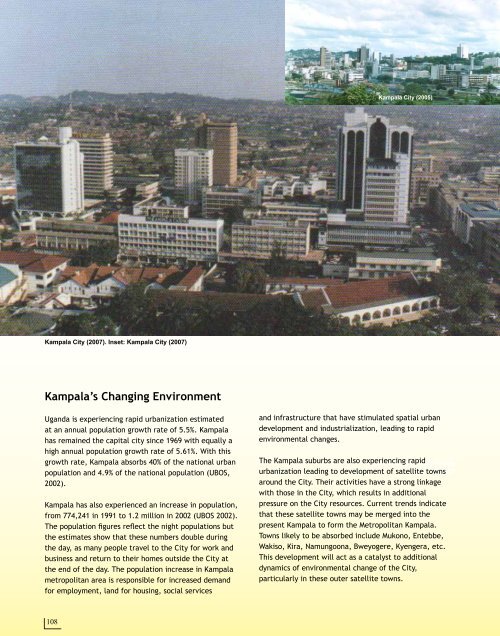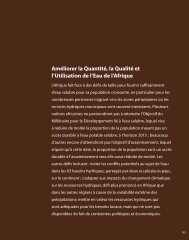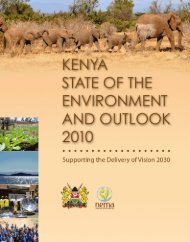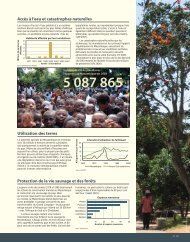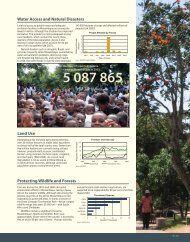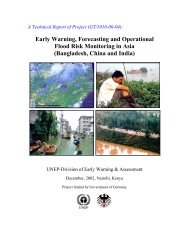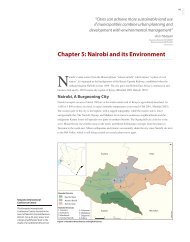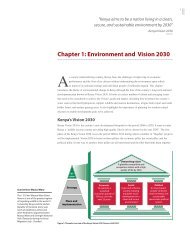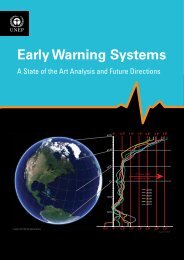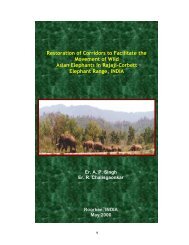Uganda Atlas of Our Changing Environment - GRID-Arendal
Uganda Atlas of Our Changing Environment - GRID-Arendal
Uganda Atlas of Our Changing Environment - GRID-Arendal
Create successful ePaper yourself
Turn your PDF publications into a flip-book with our unique Google optimized e-Paper software.
Kampala City (2007). Inset: Kampala City (2007)<br />
Kampala’s <strong>Changing</strong> <strong>Environment</strong><br />
<strong>Uganda</strong> is experiencing rapid urbanization estimated<br />
at an annual population growth rate <strong>of</strong> 5.5%. Kampala<br />
has remained the capital city since 1969 with equally a<br />
high annual population growth rate <strong>of</strong> 5.61%. With this<br />
growth rate, Kampala absorbs 40% <strong>of</strong> the national urban<br />
population and 4.9% <strong>of</strong> the national population (UBOS,<br />
2002).<br />
Kampala has also experienced an increase in population,<br />
from 774,241 in 1991 to 1.2 million in 2002 (UBOS 2002).<br />
The population figures reflect the night populations but<br />
the estimates show that these numbers double during<br />
the day, as many people travel to the City for work and<br />
business and return to their homes outside the City at<br />
the end <strong>of</strong> the day. The population increase in Kampala<br />
metropolitan area is responsible for increased demand<br />
for employment, land for housing, social services<br />
108<br />
Kampala City (2005)<br />
and infrastructure that have stimulated spatial urban<br />
development and industrialization, leading to rapid<br />
environmental changes.<br />
The Kampala suburbs are also experiencing Lake Bisina rapid during floods<br />
urbanization leading to development <strong>of</strong> satellite May towns 18 2007<br />
around the City. Their activities have a strong linkage<br />
with those in the City, which results in additional<br />
pressure on the City resources. Current trends indicate<br />
that these satellite towns may be merged into the<br />
present Kampala to form the Metropolitan Kampala.<br />
Towns likely to be absorbed include Mukono, Entebbe,<br />
Wakiso, Kira, Namungoona, Bweyogere, Kyengera, etc.<br />
This development will act as a catalyst to additional<br />
dynamics <strong>of</strong> environmental change <strong>of</strong> the City,<br />
particularly in these outer satellite towns.


